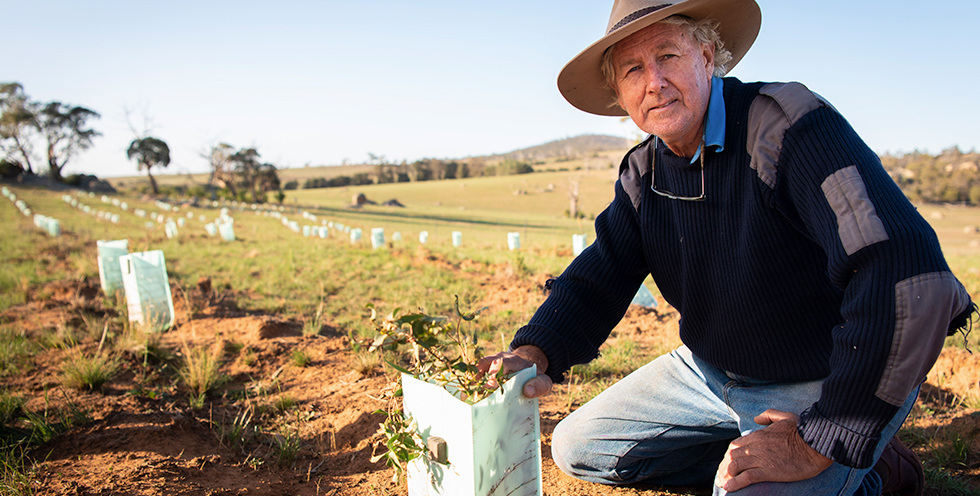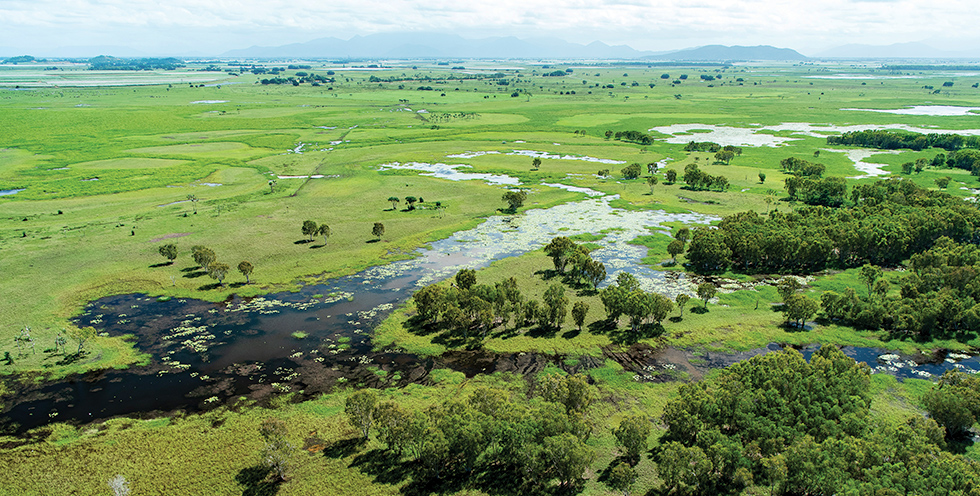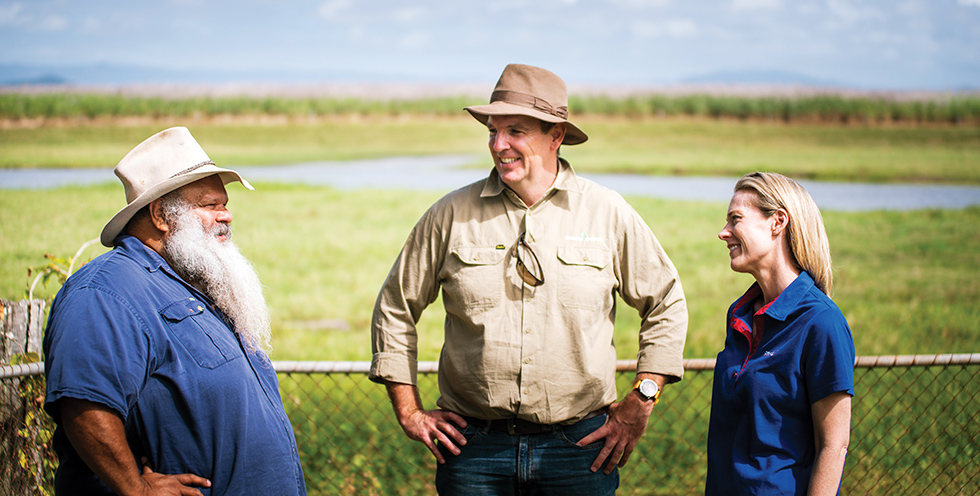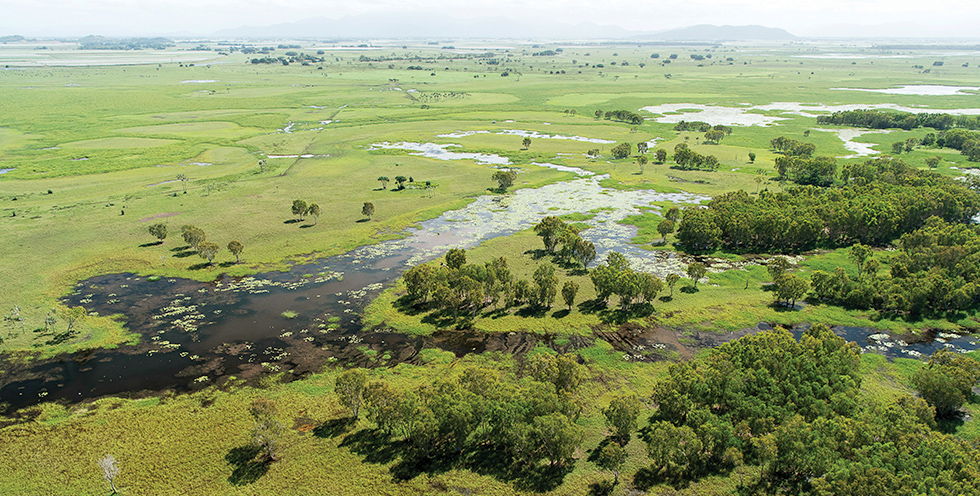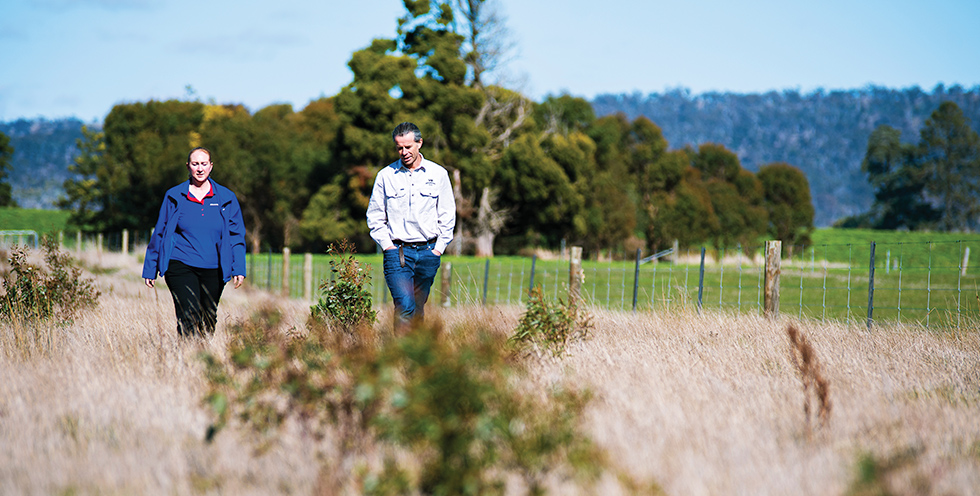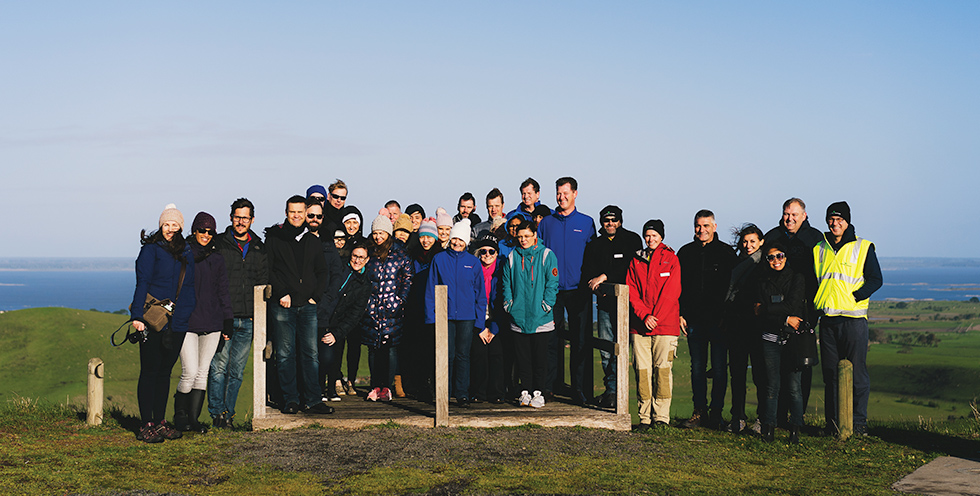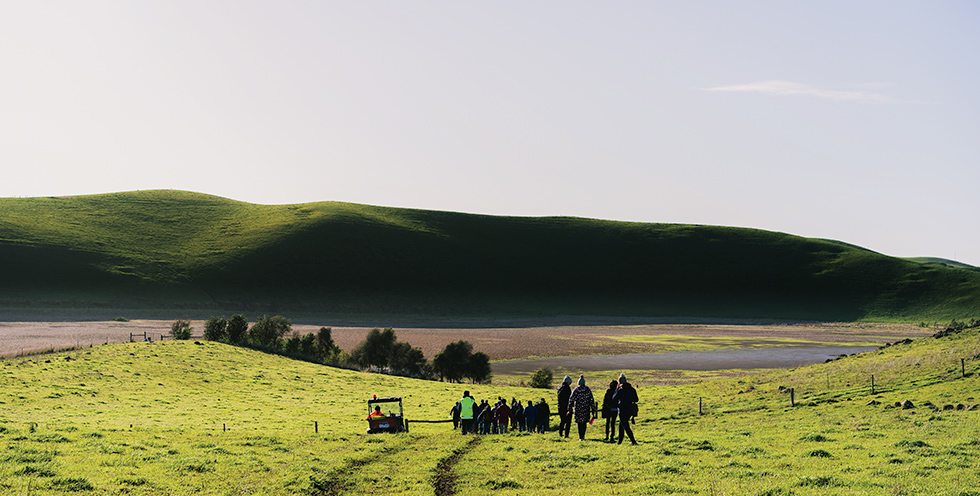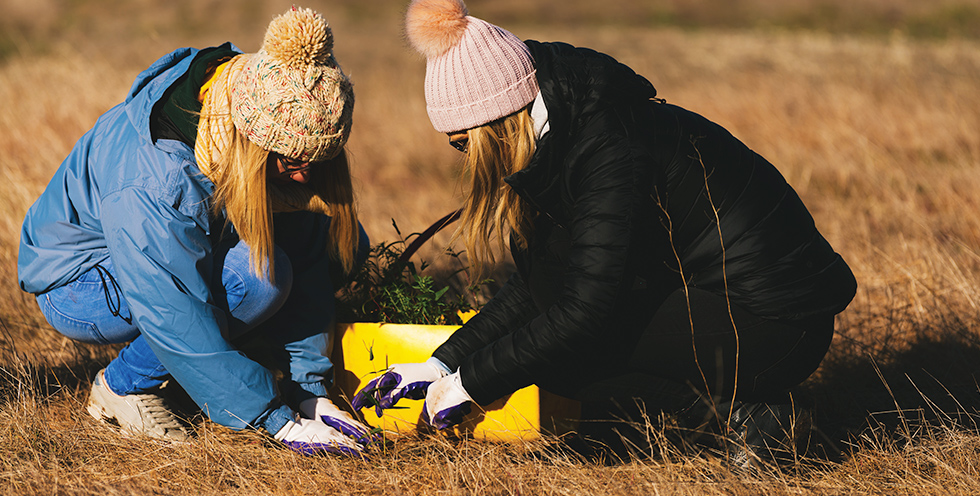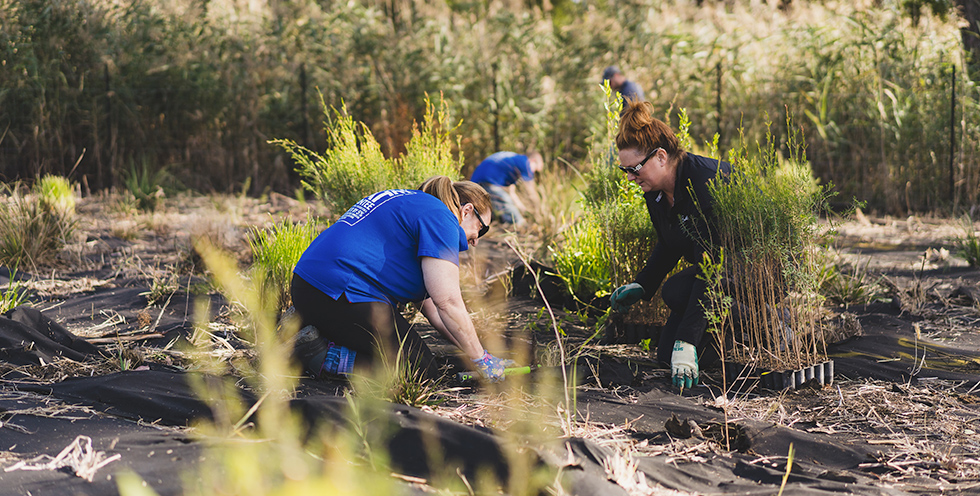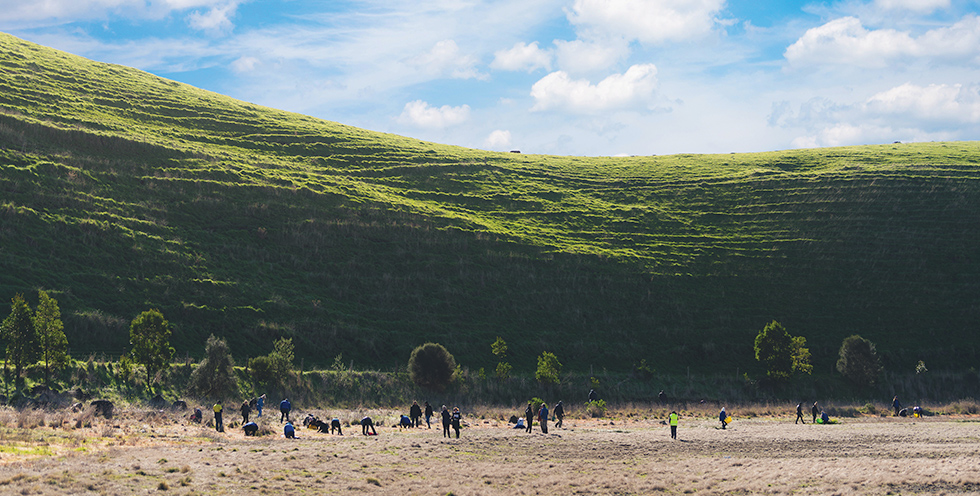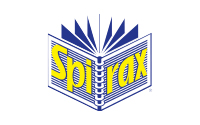Restoring Australia
Use one tree,
we'll plant two
Use one
tree, we'll
plant two

Regenerating Australian landscapes through our Restoring Australia Initiative
At Officeworks, we’re committed to putting people and the planet at the heart of what we do. Restoring Australia sees us plant two trees for every one used, based on the weight of paper products purchased by our customers.
Launched in 2017 in partnership with Greening Australia, we’ve now planted 1.4 million trees and restored 1,800 hectares of habitat and landscape across the country.
These large-scale tree planting and land restoration projects create habitats that protect threatened or endangered species, and wildlife corridors that help native wildlife flourish. At the same time, it supports local landholders to improve their land and the communities in which they live.
By integrating sustainability into our strategy, operations, and decision-making processes, we know we can make a positive difference to people and the planet, today and into the future.
Our impact so far
Trees planted since 2017

Restore woodland
ecosystems
Introduce more than 20
native plants to the
identified locations
Improve habitats for
threatened species
Provide a new home for
local wildlife like the
Eastern barred bandicoot,
Eastern quoll and Eastern Bettong
Rejuvenate existing
bushland
Reconnecting key areas
of habitat and improving shade
and shelter on farms
How it works
We'll plant two trees
for every one used
Calculated based on the biomass of paper-based products sold at Officeworks.
How we calculateRestoring Australia sites
Trees planted
Hectares
Planting sites
Cumberland Plain
Native grasslands and woodlands once covered great swathes of Australia including Sydney’s Cumberland Plain, but over time, European agricultural practices and urban development have contributed to significant removal of these diverse and beautiful habitats. This project is helping to progressively restore the Cumberland Plain’s unique grassy woodlands.
4,200
10
1
Monaro
The Monaro region is an iconic farming district on the NSW southern tablelands. Over the past decade the region has suffered a devastating loss of trees due to dieback of the dominant species, Eucalyptus viminalis or Ribbon Gum – which happens to be a primary forage species for the Koala. These restoration plantings are designed to support many species in the Monaro, as well as providing feed trees to support nearby Koala populations to return to these sites in the future.
Endangered or threatened species supported:
- Koala (endangered)
41,941
141.2
96
Riverina
The Riverina is one of the food bowls of Australia, producing fruit, wheat, beef, lamb, wool, vegetables, cotton, nuts, and aquaculture products. The extensive development for agriculture has, however, impacted on the extent and condition of native vegetation and wildlife. Plantings at this site are strategically targeted to create habitat for the Superb Parrot.
Endangered or threatened species supported:
- Superb Parrot (vulnerable)
100,202
334
10
Southern Highlands
The Southern Highlands, south of Sydney, is home to the critically endangered Regent Honeyeater and Swift Parrot. This project aims to help reverse the decline of these threatened species by re-establishing the Regent Honeyeater and Swift Parrot’s migratory habitat across degraded land within the Wollondilly catchment.
Endangered or threatened species supported:
- Regent Honeyeater (critically endangered)
- Swift Parrot (critically endangered)
55,294
125.4
6
Reef Aid
Lake Mary and Lake Serpentine regions are coastal wetlands in one of the Great Barrier Reef catchments. This project is restoring wetlands to reduce pollutants ending up in the Reef, improving water quality and increasing the Reef’s resilience to climate change. The plantings also aim to provide habitat for species such as Barramundi, the White-throated Snapping Turtle, and the Plumed Whistling Duck.
Endangered or threatened species supported:
- White-throated Snapping Turtle (endangered)
- Australian Painted Snipe (endangered)
16,600
11.7
3
Eyre Peninsula
Plantings at this site north of Port Lincoln on the Eyre Peninsula are restoring woodland habitat to support a host of threatened and declining species. The project is part of a wider landscape-scale effort to protect and restore areas of Drooping Sheoak Grassy Woodland, an ecological community that in 2022 was listed as Critically Endangered under the Environment Protection and Biodiversity (EPBC) Act.
Endangered or threatened species supported:
- Malleefowl (vulnerable)
113,700
103
2
Kangaroo Island
The North Cape Revegetation Project on Kangaroo Island, about 100km southwest of Adelaide CBD, aims to increase the abundance of feeding habitat for the endangered Glossy Black-Cockatoo, which relies on mature Drooping Sheoak cones for food.
Endangered or threatened species supported:
- Glossy Black-Cockatoo (endangered)
40,000
50
1
Tasmania Island Ark
Tasmania is the last refuge in Australia for many small mammals, such as the Eastern Barred Bandicoot, Eastern Quoll and Eastern Bettong. They were all once common across south-eastern Australia, but their populations and habitat are now in decline. Plantings here are designed to create corridors of habitat between two priority locations to help protect, buffer, and reconnect habitat ‘islands’ within the agricultural landscape of the Tasmanian Midlands.
Endangered or threatened species supported:
- Eastern Barred Bandicoot (vulnerable)
- Eastern Quoll (endangered on mainland Australia)
- Spotted Tail Quoll (vulnerable)
- Eastern Bettong (near threatened)
218,427
477.4
28
Otways
The Central Otways on the Otway Plain are home to a diverse range of vegetation, large areas of which has been cleared and modified, leaving depleted forests and vulnerable riparian scrub. This project is strategically replanting areas to build habitat linkages with nearby patches of remnant bushland.
63,237
64.1
15
Habitat 141
Habitat 141 is a long-term, collective response to habitat fragmentation and climate change along the 141st longitude. This biodiversity hotspot stretches from the wild coast of South Australia, along the Victorian border, and up to the rugged rangelands of New South Wales. It serves as a significant opportunity to invest in some of our key landscapes and provide strong environmental benefits for generations to come. Planting in this area established Brown Stringybarks and Desert Stringbarks to help buffer and improve existing remnant vegetation.
Endangered or threatened species supported:
- South-eastern Red-tailed Black Cockatoo (endangered)
11,320
5.4
1
Strzelecki
Gippsland’s Strzelecki Ranges, known as the Land of the Lyrebird, is a landscape that grows some of the tallest trees in the world. This project is strategically recreating habitat corridors along gullies while also stabilizing gullies to help reduce sediment runoff into nearby creeks and rivers.
Native species supported:
- Greater Glider (endangered)
- Genetically significant Strzelecki Koala
183,010
36.5
9
Victorian Volcanic Plains and Stony Rises
The Victorian Volcanic Plains stretch from Melbourne to the South Australian border, covering an area of 22,000 square kilometres. Plantings in this area are helping to restore these natural temperate grasslands and Stony Rise Woodlands, which are home to eight nationally threatened animal species and are of high cultural significance for local Aboriginal peoples.
Endangered or threatened species supported include:
- Corangamite Water Skink (endangered)
- Growling Grass Frog (vulnerable)
145,817
216.6
46
Wheatbelt
A legacy of extensive clearing in the WA Wheatbelt region has resulted in widespread land degradation. Planting across the Wheatbelt sites is revegetating areas to combat erosion and salinity. These plantings are also designed to improve habitat for several endangered species, including three types of black cockatoo.
Endangered or threatened species protected:
- Carnaby’s Cockatoo (endangered)
- Baudin’s Cockatoo (endangered)
- Forest Red-tailed Black Cockatoo (endangered)
462,348
379
3
Platinum
Gold
Silver
Bronze
BIC Aust P/L
Blue Star Print
Bostik (Aust) P/L
Brilliant Lighting Aust P/L
Brown Trout Publishers Pty Ltd
Calidad Distributors Pty Ltd
Charters Paper Pty Ltd
Charti Pty Ltd
Checkpoint Meto Aust P/L
Courtlands Park
D-Link Australia Pty. Limited
Educational Colours P/L
Gift Packaging & Accessories Pl
Hinkler Pty Ltd
IG Design Group
Italplast
Jasco P/L
Jasnor (Australia) Pty Ltd
John Wiley & Sons Aust Ltd
Johnco Productions Pty Ltd
JPM International P/L
Larson-Juhl Australia Pty Ltd
Mercator Lighting
Mitsubishi Pencil Aust P/L
Pentel (Aust) P/L
Pilot Pen Australia Pty Ltd
Polyair Australia Pty Ltd
Rossdale Pty Ltd
Shamrock Australia Pty Ltd
Shurtape Australasia
Staedtler Pacific P/L
Stylus Tapes International
UCC Australia Pty Ltd
Universal Gift Traders
Venus Hartung Pty Ltd
Verbatim Aust P/L
Visy Boxes And More
Vital Office (Aust) Pty Ltd
WH Annett P/L
X-Press Graph-X Pty Ltd
Help our mission take root
Let your friends and family know that they can now make a positive difference to their community
and the environment by shopping at Officeworks for all their office supplies.
Find out more about our other initiatives that help the environment.
Latest videos
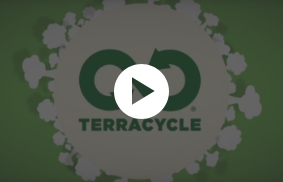
A Better Way to Recycle with the Zero Waste Box from Officeworks and Terracycle
Officeworks and Terracycle have teamed up to create an innovative new recycling solution in Australia, known as the Zero Waste Box platform. Learn more about the Zero Waste Box and how you can properly recycle different types of waste, including pens, safety equipment and coffee capsules.
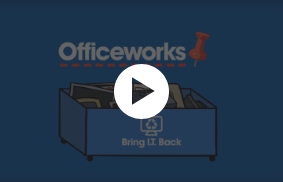
Recycle Your Old Computers at Officeworks with the 'Bring I.T. Back' Program
The 'Bring I.T. Back' Program is our way of helping to make a positive difference to the environment through approved recycling processes. Learn what happens when you drop off your old or broken computer equipment to Officeworks for recycling.
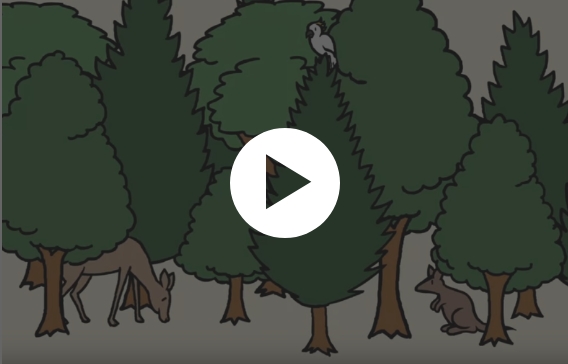
Choosing Paper and Wood Products Responsibly with Officeworks
At Officeworks, we care about the maintenance and protection of our forests and the environment, which is why we always ask our suppliers where our paper and wood products come from.
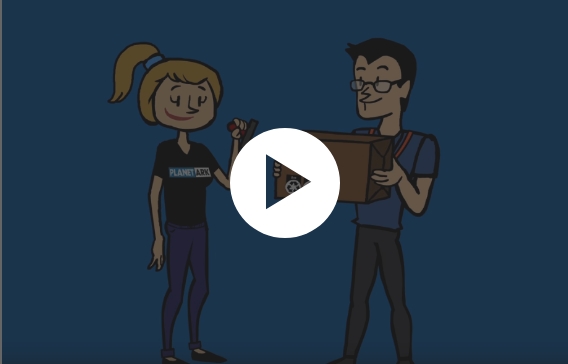
Recycle the Right Way with Officeworks and Planet Ark
Knowing what you can and can’t recycle in your curbside bin can be confusing, which is why Officeworks and Planet Ark have teamed up to create the Australian Recycling Label


 has the facebook
has the facebook




